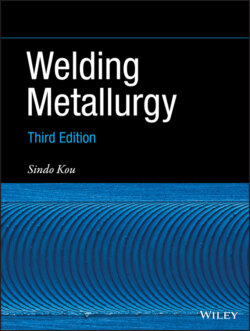Читать книгу Welding Metallurgy - Sindo Kou - Страница 45
1.4.1.2 Advantages and Disadvantages
ОглавлениеWith a very‐high‐power density in EBW, full‐penetration keyholing is possible even in thick workpieces. Joints that require multiple‐pass arc welding can be welded in a single pass at a high welding speed. Consequently, the total heat input per unit length of the weld is much lower than that in arc welding, resulting in a very narrow HAZ and little distortion. Reactive and refractory metals can be welded because there is no air in vacuum to cause contamination. Some dissimilar metals can also be welded because the very rapid cooling in EBW can prevent the formation of coarse brittle intermetallic compounds. When welding parts vary greatly in mass and size, the ability of the electron beam to precisely locate the weld and form a favorably shaped fusion zone helps prevent excessive melting of the smaller part.
However, the equipment cost for EBW is very high. The requirement of high vacuum (10−3–10−6 Torr) and X‐ray shielding is inconvenient and time consuming. For this reason, medium‐vacuum (10−3–25 Torr) EBW and nonvacuum (1 atm) EBW have also been developed. In addition, the fine beam size requires precise fit‐up of the joint and alignment of the joint with the gun. As shown in Figure 1.29, residual and dissimilar metal magnetism can cause beam deflection and result in missed joints [17].
Figure 1.29 Missed joints in electron beam welds in 150‐mm‐thick steels: (a) 2.25Cr–1Mo steel with a transverse flux density of 3.5 G parallel to joint plane; (b) SB (C─Mn) steel and A387 (2.25Cr–1Mo) steel.
Source: Blakeley and Sanderson [17]. Welding Journal, January 1984, © American Welding Society.
